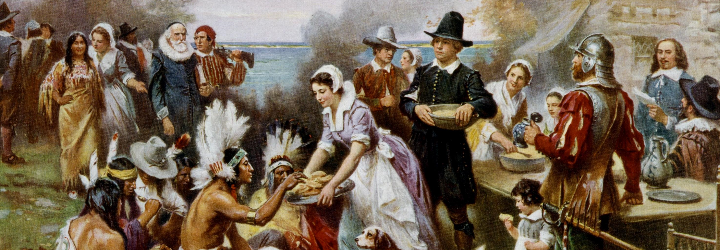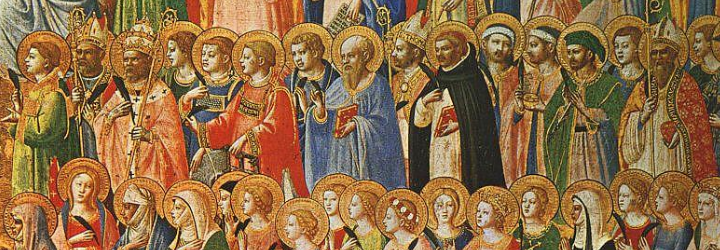I often find myself taking many modern medical advancements for granted. For instance, I can take over-the-counter medication to treat a cold or receive a vaccine to prevent the flu. We have countless specialists and medical professionals that can treat a whole host of illnesses and billions of dollars are poured into medical research each year. Truly, many of these medical achievements are miraculous, if one stops to think about them.
But consider: there was a time when the primary treatment for many diseases was a miracle. This is perhaps no where more evident than in medieval Europe, where a myriad number of saints could be invoked and relied upon to cure illness. The decline of the pagan religions of Greece and Rome was paralleled by the rise of Christianity in most of Western Europe. The god Asclepius, who was purported to cure those who slept at his temples, declined in popularity and gave rise to a pantheon of Christian saints with their own formidable healing powers. This is not to say that physicians did not exist in medieval times, but they were mostly reserved for the rich, leaving the vast majority of people reliant upon these holy persons. Let’s look at a few of these figures and examine their role in medieval and modern medicine.
Saint Anthony (251-356 AD) was an Egyptian Christian monk known for his asceticism and extreme piety. He is perhaps most remembered for his temptation in the desert, the subject of many paintings which depict this gruesome scene. In the middle ages, this saint was invoked when one was afflicted with either erysipelas [Gk. erythros (red) + pellas (skin)], a skin infection producing a bright red rash, or ergotism [Fr. argot (spur)], poisoning by the ingestion of a fungus that afflicts grains. Both conditions are known as “Saint Anthony’s Fire.” How did our friend Anthony come to be associated with these diseases? His remains were discovered and credited with the miraculous recovery of a French nobleman’s son from ergotism. In gratitude, he founded The Order of Saint Anthony in 1095 (an order which still exists today), and their monastery became famed for treating erysipelas and ergotism. It is interesting to note that ergot poisoning has been suggested as an explanation for “bewitchment” as it produces spasms, skin tingling, headaches, and even psychosis.
 The Temptation of Saint Anthony, by Grünewald
The Temptation of Saint Anthony, by Grünewald
Another Saint to have a disease named after him is Saint Vitus (died 303 AD). Vitus was a Sicilian Christian monk, known as the patron saint of dancers, actors, and comedians. This came about from the manic dancing that would take place in front of his statue during his feast day in the middle ages in order to venerate the saint. (This evokes images of the Maenads and their frenzied dancing for the god Bacchus.) With this in mind, which affliction(s) do you think Vitus was associated with? If you said epilepsy, you’d be correct. However, his name is attached to another disorder: Sydenham’s chorea [Gk. choreia (a dance)], otherwise known as St. Vitus’s Dance. This is a sign of acute rheumatic fever, a childhood infection caused by Group A streptococci. Thomas Sydenham (1624-1689), the “English Hippocrates,” first characterized the disorder. You can imagine what symptoms are produced by Sydenham’s chorea from its name alone: jerking and uncontrollable spasms of the face, hands, and feet, as if the patient were dancing manically. It is no wonder that the saint venerated by frenzied dancing should come to be associated with Sydenham’s chorea centuries before Sydenham made his observations.

Left: S. pyogenes, the causative agent of acute rheumatic fever; right: the man himself, Saint Vitus
Let’s end with a look at the brother saints, Cosmas and Damian (died 287 AD). The brothers were born in Cilicia (Asia Minor) and their chief miracle is truly fascinating: they hold the distinction of successfully completing the first transplant surgery. The story goes that they amputated the gangrenous leg of a patient, which in those times was the best one could hope for. However, being imbued with divine power, the brothers were said to have taken the leg from a dead Moor (in some versions of the story, an Ethiopian) and miraculously transplanted it to the amputee. This predates the first modern organ transplants by centuries, and it is quite a tall tale. The fact remains that human beings were considering organ transplants long before they were feasible. What did the brothers get in return for their miraculous healing powers? Unfortunately, they lived during a time of great persecution against Christians by the Roman emperor Diocletian, and were thus incarcerated, pelted with stones, burned at the stake, shot full of arrows, sawn in half, and decapitated. But their legacy lived on, and the brothers became the patron saints of medicine during the middle ages. Christiaan Barnard, eat your heart out!

Left: Saints Cosmas and Damian at work with angelic assistants; right: how the pair met its end
You may be asking yourself, how were these saints invoked? How exactly did the masses interact with these larger-than-life figures? Many were venerated in monasteries and churches and could be prayed to in times of need. Priests and monks could give advisement on how and when to pray, and in many cases, acted like middlemen between the holy and the sick. Perhaps the most common way to interact with a saint was through relics. The importance of these objects cannot be understated. Relics could be articles of clothing, pieces of wood purported to be from the cross, and even body parts such as bones and blood. These objects were housed in healing shrines and places of worship—being in their mere presence could ensure health and recovery.
These are but a few of the many, many saints associated with their own diseases, each fascinating in their own right. Hopefully I’ve shed a bit of light on the medical practices and beliefs of our medieval forebears!











